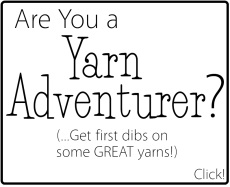This is Wilson.

Wilson belonged to my friend Leslie (who was instrumental in creating the SpaceCadet logo) and he was a great dog. Everyone says that about their dogs, I know, but Wilson really was. I met him when he was starting his retirement career as a Pets as Therapy dog, visiting long-term residents at his local hospital who benefited from a bit of borrowed canine company. He was also an “Ambassa-dog” for a charity called the Dogs Trust, attending talks and events with Leslie and showing people just how lovely rescue dogs can be. And he worked behind the scenes at the charity too, where they used his excellent communication skills to help less confident rescue dogs become used to being around others. When I met him, Wilson was gentle and kind, tolerated my (then) 1-year-old’s clumsy curiosity, and lent against my leg with the kind of heaviness that tells you this dog would really like a nice scratch behind his ear.
Last month, Wilson lost his battle with a brain tumour, and when Leslie realised he didn’t have much time left, she asked me and another mutual spinning friend, Stephanie of OttertopWorkshop, whether it would be possible to spin up Wilson’s fur to knit a small square to go into his keepsake box. Or was that a crazy idea…? Stephanie and I both assured her it wasn’t at all crazy — it’d be a nice way to remember him — and we agreed that she should spend some quality time with Wilson in his last few day, fussing over him and brushing him, until she’d collected enough of his undercoat to spin a bit of yarn. I warned Leslie that it might need to be mixed with wool if it didn’t hold together well on its own and, though she agreed, I could sense that wasn’t what she really wanted. She wanted 100% Wilson — and I understood.
The bag of fur arrived on Friday, and I sat down immediately at my wheel. I’ve never successfully spun dog before — I’d tried years and years ago, with some Husky fur that a colleague had given me, but I couldn’t make a yarn that held together. But that was when I was a relatively new spinner, and I hoped I’d gained enough experience by now to coax a yarn out of Wilson’s uncooperative-looking fluff.

I began the wheel turning… slowly… slowly… just to see how the fur would behave. With such a short-stapled, uncrimped fiber, my hands quite naturally went to a long draw, and spun it with a bit of thickness. And it seemed to be holding together pretty well. I stopped the wheel and let the yarn twist back on itself and it looked good but… here… and there… I could see it wanted to come apart. I moved the drive band to a slower whorl for more control, loosened the brake a wee bit, and decided to go a bit thicker and to overspin it. It wouldn’t be as soft as I would like, but needs must. I could see that with a little overspin, Leslie could get the 100% Wilson yarn she really wanted, and I was determined to give her that if it were at all possible.
The overspinning worked and the yarn was (fairly) stable, thick, and surprisingly fuzzy. And I was covered in dog hair, which made laugh — all dogs shed, all humans complain about it, and here was Wilson being cheeky and still shedding on someone from beyond the grave! I took the bobbin off and put it on the lazy kate for Navajo plying — there hadn’t been enough fiber to split between two or three bobbins for proper plying, as I would have preferred.

Navajo plying was a bit of a trial — pulling the yarn through the loop was more friction than it could handle in places and it fell apart on me quite a few times — but I managed it in the end. Again, a little overtwist helped to hold it and, in this case, balanced the overtwist in the singles. When I was done plying, I grabbed my needles and knit it straight off the wheel. Normally I’d let the yarn rest and give it a wash, of course, but I didn’t want to lose any of the fiber’s Wilson-ness for Leslie, so I decided to leave it as it was.

Unfortunately, I got lost in my thoughts and cast too many stitches, so it came out as more of a rectangle than a square, but the yarn had held together surprisingly well during the knitting and so I decided to leave it as it was rather than stress the yarn by ripping back. When I cast off, I looked at the fuzzy rectangle in my hand, and decided that was probably just about right.
Before I wrote this piece, I emailed Leslie and asked her to clarify Wilson’s various jobs. I remembered them roughly, but wanted to be sure I got it all right. She replied with a list, and the last point on it read simply, “my best friend.” Of all the jobs that Wilson did, and all the joy he brought to people’s lives, I suspect his most important role was being Leslie’s best friend. I am honoured to have been able to help give her something to remind her forever of her lovely Wilson.

 50/50 Baby Alpaca/Merino blend in Evening Fog (left) and Tarnished (right)
50/50 Baby Alpaca/Merino blend in Evening Fog (left) and Tarnished (right) 50/50 Baby Alpaca/Merino blend in Rhubarb and Custard (left) and SeaFoam (right)
50/50 Baby Alpaca/Merino blend in Rhubarb and Custard (left) and SeaFoam (right) Clockwise from top left: BFL Combed top in Spice Trade, Sweetpeas, SeaFoam, and Sweetpeas.
Clockwise from top left: BFL Combed top in Spice Trade, Sweetpeas, SeaFoam, and Sweetpeas.














































